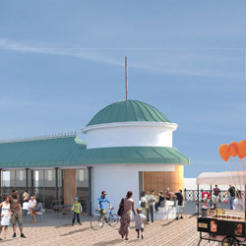The Hasting Pier Charity, which aims to restore an East Sussex seaside pier damaged in an arson attack, has raised £590,000 from community shares in six months.
It means the charity has enough funds to fully restore Hastings Pier. It had already raised £13.7m from other sources.
The Hasting Pier Charity is a registered community benefit society - a type of exempt charity which is able to offer interest-bearing shares to members.
The model is often used to attract investment from many small shareholders. It is most often used to raise funds to buy community assets such as local shops and pubs.
The charity offered shares of between £100 and £20,000 in October, aiming to raise £500,000, but exceeded its target.
The shares will offer an anticipated dividend of 3 per cent per annum after three years but also allow investors to claim back up to 30 per cent of their investment in tax relief.
Simon Opie, Hasting Piers’ chief executive, said just under 3,000 people have bought shares, with about 50 per cent of them local to Hasting.
"It is an amazing outcome and just shows the depths of feeling that people have and the appeal of the pier itself and its story," he said.
"Many people, at whatever level they have invested, have dug extremely deep in the current economic climate to support the project and we owe them a huge debt of gratitude."
The main engineering work needed on the pier will cost close to £14m, over £11m of which was funded through a substantial grant from the Heritage Lottery Fund. Work on the pier started in January this year and is due to complete late Spring of 2015.
Plans for the pier include visiting funfair, circus, open-air cinema and theatre, farmers' markets and deck-chair hire whilst a Heritage Centre will house a memory bank for the pier's history.
Up to 95 per cent of the Grade II-listed structure was damaged in an arson attack in 2010, following years of neglect.








